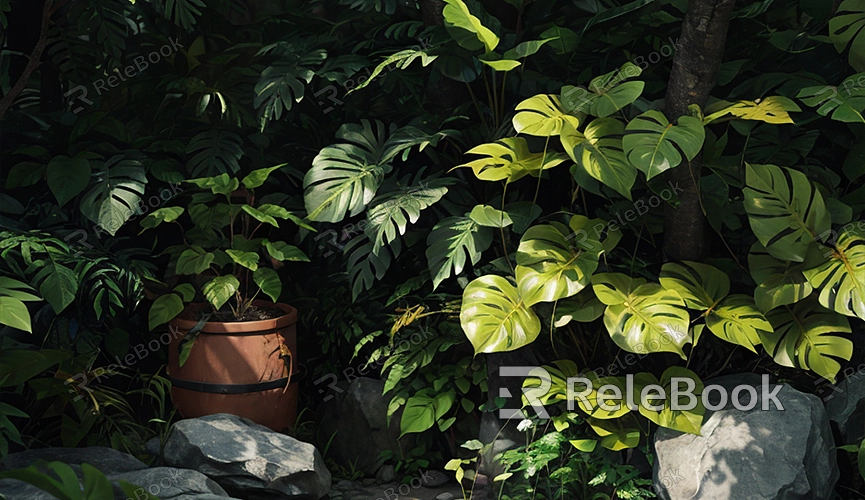What is leaf texture?
"Leaf textures" refers to the texture or quality of leaves. In visual arts, design, or 3D graphics, this term is often used to describe the appearance, shape, texture, and feel of leaves. These 3D textures can include patterns, veins, colors, glossiness, and other characteristics found on the surface of leaves.

In 3D design, "leaf textures" are commonly used to simulate texture mapping or images of tree or plant leaves, enhancing the realism of models or scenes. They are utilized for model rendering or virtual scene rendering to depict leaves more realistically, adding depth and detail to the visual output. Moreover, 3D leaf textures are employed in game development, visual effects in films, virtual scenes, or other projects involving elements of vegetation.
In Blender, 3D leaf textures are extensively utilized 3D assets. They are employed to create realistic effects of plants, trees, or grass fields. Leaf texture images can be obtained from Relebook's website, HDRI Haven, Texture Haven, or other free or paid texture repositories.
To integrate the required 3D leaf textures into Blender, you can create a new material in the Shader Editor and add an Image Texture Node in the Node Editor. Link your leaf texture image to the node and connect the node output to the material's Base Color input.
Next, apply this material to your model. For instance, if you're rendering vegetation, like trees, apply this material in the plant model's material editor. Adjust parameters in the node editor, such as scale, rotation, hue, brightness, etc., to achieve the desired effect. Furthermore, you can add additional nodes to modify reflections, glossiness, or other visual attributes of the material. Preview your model using the Render View or Viewport Shading to inspect the leaf texture effect. Adjust lighting, camera, and material properties to enhance the texture's realism.

